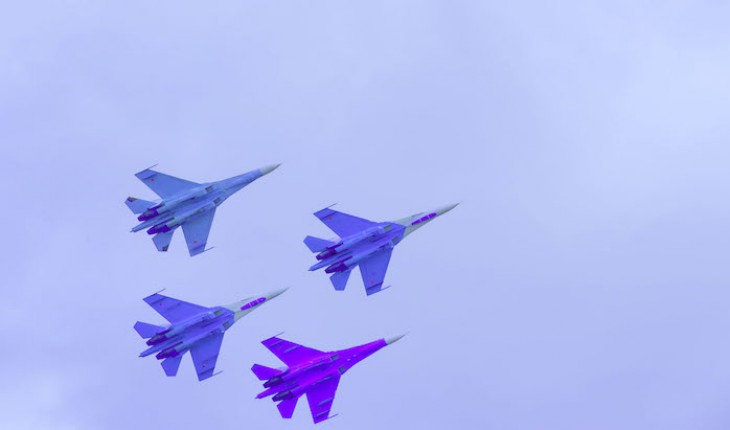Many of us travel by air. In 2013 alone, more than 3.1 billion passengers were carried, world-wide, in scheduled, mainly jet turbine aircraft. Of these flights, 840 million originated in Europe and 850 million in the USA. These figures do not include non-scheduled passenger (IT – inclusive tour) operations, commuter, air-taxi and general aviation activity; the last three involve nearly one quarter of a million aircraft and half a million pilots, just in the USA. In addition, 50 million metric tonnes of cargo were moved. Currently, aviation absorbs 3.5 per cent of world GDP (Gross Domestic Product) and directly employs 8.36 million people, and indirectly, nearly sixty million. This is expected to increase by a further one third over the next ten years, having grown 50 per cent in the five years following the recessional downturn.
Risk and safety
Determination of aviation safety requires an understanding of risk – of concern to all but the most phlegmatic flyer. Risk-taking may be defined as the intentional acceptance of uncertainty. A significant minority of passengers are apprehensive about flying to the extent that the British Airways ‘Flying with Confidence’ courses have welcomed some 50,000 participants over the last three decades, world-wide. But aviation remains an exceptionally safe means of travel, and remarkably, is second only to football as a spectator sport in the UK. Aviation accidents tend to be headline news on account of their rarity, and at times, the eye-catching number of lives lost.
It was not always so. At the dawn of civil aviation, just after the Great War, G Holt Thomas reported that “… the argument that (civil) flying is inherently dangerous, cannot, in fact, be substantiated…, the Air Ministry’s figures show that, for every fatal accident which takes place, more than 40,000 miles are flown in safety…”. Such attrition would be inconceivable today; private aviation has an accident rate of one two hundredth of this, and western airlines flying western-built aircraft have a fatal accident rate of one event in every five million flying hours – maybe 2.5 trillion miles flown.
The favourable downward trend in fatal accident statistics has been progressive for several decades. Over the past thirty years the number of passengers carried in jet aircraft per year has quadrupled, flying hours have trebled and the fatal accident rate and number of lives lost, has better than halved, in spite of the greatly increased level of activity. Ominously the number of lives lost to sabotage and enemy action in the decade 1980 – 1989 amounted to 1,200: a trend which may be on the increase. At the lowest operational level, the single pilot small aircraft, the accident rate has changed but little (see plate 1).
Human performance, and system failure
It does not need specialist knowledge to appreciate that the safe arrival of each and every one of the 100,000 flights departing daily, world-wide, depends on the performance of the pilot(s) involved. This does not diminish the importance of those who design, build and maintain the equipment, the airports, the en-route navigation services and the air traffic control services, but it is a starting point in the understanding of medical cause accidents.
Aviation safety is designed around system redundancy. Airframes are built to resist stresses greater than those they will encounter in all but the most extreme circumstances. Engines are fabricated for reliability, but are almost always duplicated, or more. Likewise radio and navigation, hydraulic, electrical and control systems are duplicated, triplicated or quadrupled. Only in the smallest (mainly non-public transport) aircraft is this not the case. In terms of the pilot complement, under international agreement, only aircraft below 5.7 metric tonnes may be flown by a single crew member. And in the event of failure of his / her performance, or health, there is no back up and disaster may be inevitable.
Four fifths of fatal aircraft accidents are due to human failure of one sort or another, three fifths from pilot failure. Over a recent decade, the commonest cause of fatal aircraft accident was ‘LCIF’ – loss of control of a serviceable aircraft in flight. This reflects the ultimate failure of the crew and is often a training issue. An example was the Air France 447 flight from Rio de Janeiro to Paris on 31st May 2009. The captain had left the flight deck for a rest as the aircraft approached the ITCZ (Inter-Tropical Convergence Zone) – a line of thunderstorms near the equator. The relatively inexperienced first officer (co-pilot) attempted to climb above the weather and stalled the aircraft which subsequently descended at some 11,000 feet per minute for the remaining four minute twenty seconds of the flight. Nearly two years later the hull was identified on the sea bed with many of the passengers still strapped into their seats.
Accident statistics
Accident rates may be expressed as the number of events per year, per million hours flown or per 100 million passenger kilometres. Relative risk is of secondary interest although in general terms, the smaller the aircraft, the greater the risk of fatal event. Turboprop aircraft are less safe than pure jet aircraft; piston-engine aircraft are the most risky of all. Flying in the western world is safest in terms of least likelihood of being involved in a fatal accident. Africa, which saw three per cent of world aviation activity in 2013, experienced one fifth of all fatal accidents. That Air France has experienced four times the fatal accident rate over the past four decades, when compared with British Airways, does not mean that it is not a safe airline. It may, however, influence informed choice in some.
As there are differing means of presenting risk, comparisons vary. In terms of the number of lives lost, 2013 was the safest year so far – the total fatalities numbered 265, in 29 accidents, world-wide. It is unlikely to be bettered in the foreseeable future. In terms of fatal hull losses – the likelihood of being involved in a fatal accident – 2014 was safest as there were only 21 fatal hull losses, but 925 lives were lost. These figures are explained by the loss of two airliners within a few weeks of each other, both under exceptional circumstances. The Malaysian MH370 Boeing 777-200ER vanished without trace following departure from Kuala Lumpur on 8th March 2014. For want of a better explanation at this time, this was likely to be due to pilot suicide with the murder of the 239 passengers. A few weeks later another Boeing 777-200ER, the MH17, was lost on 17th July 2014 due to a Russian missile, probably involving insurgents in the Ukraine, backed by Russia. This led to the loss of a further 298 passengers and crew.
It was not the first time a Russian missile had destroyed an airliner. The Korean Boeing 747 230B was shot down by an air to air missile from a Soviet Suhkoi SU15 interceptor on 1st September 1983. It was off-course due to pilot error, but had penetrated Soviet airspace; when attacked it was probably over international water. The total numbers of lives lost was 269. The apologists for those who leak classified information should re-read the accident report before trusting the bona fides of the Russians. The horizon looks dark, especially in view of our pathetically reduced defence capability.
Medical aircraft accident causation
Recognition of the need for standards of medical fitness started during the Great War. At the time there were a substantial number of accidents due physical infirmity of one kind or another. Initially the medical requirements, which took particular interest in the special senses – sight, hearing and balance – were so rigorous in that they were largely unattainable. In the UK, the Royal Air Force was responsible for the medical supervision of professional pilots until the founding of the Civil Aviation Authority in 1972, the same year that the Hawker Siddeley Trident 1 G-ARPI (Papa-India) crashed at Staines, Middlesex. The cause of the accident was multiple crew error but a contributory factor was the cardiovascular incapacitation of the pilot flying – Stanley Key (see plates 2 & 3). In the years beforehand, other medical cause accidents to commercial aircraft had also occurred.
The Papa-India disaster saw the need for enhanced cardiovascular scrutiny. Certain changes were made, but a demand for routine exercise electrocardiography was successfully resisted by the author, as the UK representative, at the meeting of the Cardiovascular Studies Group of the International Civil Organisation (ICAO) in Montreal: 1980. The argument was based on the Bayesian theory of conditional probability. This explains why a test with a low predictive accuracy is unhelpful in a population with a low prevalence of disease. More ‘false positive’ results are found than ‘true positive’ ones, with the licencing complications that would ensue. The adoption by ICAO of mandatory training for the possibility of incapacitation of a colleague, and of an endorsement limiting a specific airman to fly ‘as or with a co-pilot’ were important developments, suggested by the UK and adopted by ICAO. This permitted an airman with (slightly) impaired health to continue to fly.
Pilots are fitter than their non-flying peer group. A study published by American Airlines 20 years ago demonstrated that they live a mean of five years longer than their ground-based contemporaries. Nevertheless they experience similar pathological problems, albeit at a reduced rate. Acute illness may manifest itself on the flight deck, Hollywood style and be abrupt and complete, or be subtle when neither the co-pilot, nor sometimes the pilot, may be aware of it. As a result, incapacitation training has greatly, but not entirely, mitigated medical cause accidents. A study of 1,000 aviation accidents over 40 years by the Royal Air Force demonstrated that five percent were due medical cause, half being due to cardiological cause. More recent data from the USA have confirmed that the two-crew environment, whilst extremely reliable is not medically completely fail-safe. So where is the line of fitness to be drawn?
Medical Standards
Aviation is the only system of mass transportation which is controlled by international statute. The 191 signatories to the Convention on International Civil Aviation (originally the Chicago Convention, 1944) are treaty bound to maintain, or improve the ICAO Standards, in this case in medicine. The Standards are brief and need interpretation. Initially each state did so alone, with the UK, USA, Canada and Australia taking a lead. As aviation expanded, it was not always practical for individual states to act alone in matters which affected their neighbours, and others further afield. This led to regional grouping, in the case of Europe, first as the Joint Aviation Authorities (JAA) and later the European Aviation Safety Agency. The UK Civil Aviation Authority (CAA) was centrally involved in the evolution of explicit rules and guidance material. This was on the back of workshops in cardiology and other specialties, led by the administrative Aeromedical Section (AMS) in collaboration with the Aeromedical Centre (AeMC), responsible for routine and specialist clinic services.
The AMS and AeMC functioned so well in the provision of routine and specialist services that it was inevitable that after 40 years, management would find a reason to privatise it. It carries out between 400 and 500 cardiological consultations and nearly 600 cardiovascular investigations at Gatwick each year. Starkly, in the light of the Germanwings pilot suicide with the murder of 149 passengers in March 2015, there were also some 200 psychiatric consultations annually (data obtained under the FOI from the CAA). The pilot of that flight was under treatment for a psychotic illness. The reasons given for the act of corporate vandalism in shutting down and outsourcing the clinic include saving money (its charges are less than half the market rate). Notwithstanding, the cost of routine pilot medical supervision is no more than one pound sterling, each, per hour flown out of a direct operating cost (DOC) of an Airbus A320 at £10,000 per hour. And it is the pilot who carries ultimate responsibility for personnel safety.
Conclusion
The medical contribution to aviation safety has been a remarkable achievement both internationally and by the UK CAA. This has involved melding bureaucracy and medical specialty input. Perhaps it was foreseeable that the bureaucracy would ultimately prove to be the nemesis of that which it created.
- Medical aspects of aviation safety - 24th February 2016






